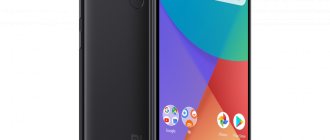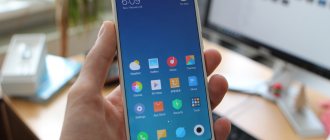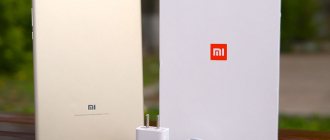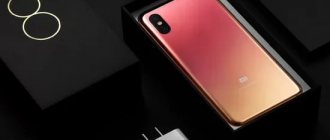This smartphone with a nice glass body was released as part of the Android One program. It received an economical and moderately productive processor, cameras with AI functions, an AMOLED screen with teardrop-shaped bangs, a high-capacity battery, complemented by fast charging, and support for high-quality wireless sound. Moreover, for hardware components, prompt updates of system software are guaranteed for two years. Vesti.Hi-tech talked about all the pros and cons of the Xiaomi Mi A3.
The smartphone represents the third generation of devices created as a result of the partnership between Xiaomi and Google under the Android One program. Thus, the new product works on a clean, unmodified version of the “green robot”. The first Android One smartphone released after the program was restarted in 2017 was the Mi A1. A year later, the company introduced the Mi A2 (read our review here), and now it’s the Mi A3’s turn. It must be said that the new device caused a mixed reaction among fans of Xiaomi products. Let's try to figure out why.
This is Xiaomi only with hardware, but inside there is Google
It’s not a shame to put it next to an iPhone.
Xiaomi A-line smartphones have become a rebirth of the sub-flagship Mi series with the “X” index by replacing the proprietary MIUI with “pure” Android with Google support for the European market. maiden name was Mi 5X, called Mi 6X
The secret of popularity is obvious: 2 years of guaranteed updates from Android developers . And all this on the basis of a mid-price smartphone with the best price-performance ratio (or price-quality, if you like).
This was the case before the release of Xiaomi A3 . This device with MIUI in the Chinese market is called Xiaomi CC9ee and is the junior smartphone of the new youth line with a somewhat strange positioning. A budget camera phone with the appearance of a flagship. Strange.
Don't have this sticker? In front of you is the “altered” Chinese Mi CC9ee
The manufacturer promises excellent battery life, good cameras and AMOLED screens. This has never appeared in the average, and even more so in the mid-budget segment.
Question: if there is Redmi K20 , a guaranteed sub-flagship with several controversial (simplified to reduce the price) parameters, then what is the CC series for?
The answer to this can only be given after detailed consideration.
Now it's glass instead of metal and it's a pain
Very nice back cover
The A-series of Xiaomi smartphones was popular thanks to and despite. Many preferred these metal smartphones of the sub-flagship line, rather than the glass flagships of the main line.
Alas, the back cover of the A3 is not even made of glass, but of some kind of fiberglass, possibly synthetic glass. It's completely indistinguishable by touch.
Most likely the same plastic that Huawei/Honor uses for their glossy budget phones. Just as bright and colorful, which will definitely give the A3 a head start on the international market. Although in Russia, on the contrary, they prefer calm colors.
The mentioned plastic is stronger than glass, but gets dirty and scratched quite easily, so the beauty will have to be hidden in a case.
The design is even simpler: we can safely say that externally the Xiaomi A3 is a simplified Mi 9 . In the eyes of marketers, this is rather a plus, although for users it is rather a minus.
Moreover, the price reduction was reflected not only by the loss of the multifunction button. The screen and cameras of the Xiaomi A3 are inferior even to last year’s A-series compacts.
The main and total failure is the screen
From a distance the screen is fine. A nightmare close up
Traditionally, cheap Xiaomi devices use IPS screens with amazing quality. Even with HD resolution. The only exception is the early batches of some models.
In Xiaomi A3 (CC9ee), engineers took a logical but unexpected step: they equipped the smartphone with a 6-inch AMOLED panel with an under-screen fingerprint scanner and HD+ .
Budget, stylish, advanced. But the sensor is slow, like the Mi 9. Once you turn on the smartphone, hopes for quality disappear.
Blue and white colors suffer the most
The display has a pronounced PenTile , low refresh rate and low brightness. Due to this, the fonts look smeared, the icons are surrounded by a blurry colored halo, and in the bright sun the text becomes completely unreadable.
Also, auto brightness does not work adequately. In fact, due to incorrectly adjusted levels, the display becomes blinding in the dark and remains faded in the sun.
Last year's junior A2 Lite had a similar diagonal IPS screen and FullHD+ resolution: no artifacts, excellent readability day and night. What about Xiaomi A3? Compared to other state employees of the company, he is frankly unpleasant to look at.
Stylish appearance
To make the case, it was decided to use glass, which made it possible to give the device a luxurious design. The glossy surface, without the slightest hint of decor, looks very elegant. But it has a significant disadvantage - it is increased soiling, despite the presence of an oleophobic coating. And scratches will inevitably appear during operation, so it’s not without reason that the manufacturer included a protective case in the kit.
The new product is presented in three classic colors: white, gray and blue.
The set of connectors includes a USB Type-C connector, an infrared sensor for controlling household appliances, and a 3.5 audio port. Accordingly, no protection against splashes and dust is provided.
The fingerprint scanner is located on the display module. It is worth noting that it has undergone a major update, which has increased its sensitivity and unlocking speed. The good news is that the fingerprint sensor is able to perceive wet and dry fingerprints, as well as function at low temperatures and very bright lighting.
There is also the possibility of face unlocking, for which the front photo module is used.
The hardware is good, but not without its drawbacks
Android 9 looks good, but doesn't work very well on the A3
After two successful generations of smartphones on “pure” Android, you expect a sub-flagship processor of the Snapdragon 660 or 710 level from engineers.
And the brand fulfills its wishes by equipping the smartphone with the fresh Snapdragon 665 platform, manufactured using an 11-nanometer process technology. Budget, but cold.
This platform is very close to last year's hit Snap 710, so Xiaomi A3's performance is fine. Both in games and in applications. Thanks to the HD screen, to some extent.
Snapdragon 665 overtakes the popular 660. Enough for everything
Memory and storage capacity are standard 4/64 or 4/128 GB , although you should wait for the 3/32 GB version. Taking into account the fact that the hybrid slot can read flash drives of half a terabyte, it is fashionable to safely choose the low-end configuration. If you are ready to sacrifice one SIM card.
The interfaces cause conflicting feelings: the 3.5 mm jack remains, but NFC has not appeared. But there is support for all Russian and European communication frequencies, the latest Bluetooth 5.0 and dual-band Wi-Fi.
Advantages and disadvantages of the Mi A3 phone
Xiaomi Mi A3 measures 71.85 mm wide, 153.48 mm long and 8.48 mm thick. Men with large hands can easily operate it with one hand, but women with small hands may feel that the device is too big for them. The weight of the device is about 173 grams, this weight is quite noticeable if you hold the phone in one hand; when working with the phone with one hand for a long time, the hand may well get tired.
When looking at the overall ease of use of the phone, there are some issues with it due to the weight or size of the device, but if the other features of the device make up for its shortcomings, then buying this phone is a good choice.
The smartphone is equipped with an 8-core Qualcomm Snapdragon 665 processor, which is made on 11 nm. technical process.
The smartphone has 4 GB. RAM, which is quite enough. In very rare cases it will not be enough, but with this amount of RAM, you will rarely have problems.
The device's data storage capacity is 64 GB, and while this is enough for photos, it may not be enough for video shooting and a large number of games.
The phone is compatible with SD cards, so you can easily expand its memory. So you probably don't need to worry about storage capacity.
Mi A3 has a display diagonal of 6.09 inches. It's quite big. Photos, videos and games will look great on this screen. It is also suitable for productive use, such as creating a business document.
The smartphone has a high-end display and any graphic content you display on it, including videos and games, will be displayed clearly.
The main camera of the phone has 48 megapixels and can take high-resolution photos and videos. While you're shooting landscapes or printing high-definition photos, you may want a higher-resolution camera, but most of the time you'll be happy with the camera.
Also, the smartphone has a 32.28 megapixel front camera, which is extremely high. Since this camera can take high-quality photos, you will rarely be disappointed with its resolution. You can rely on the camera quality of this smartphone.
The battery capacity of Xiaomi Mi A3 is 4030 mAh, which is a very large indicator. Compared to other smartphones, the Xiaomi Mi A3 battery lasts a very long time. With such a capacity, you will be pleasantly surprised by the battery life. Even if you watch videos or play games for a long time, you will not have any problems with the battery.
The flagship cameras are sad, and it’s a shame to post videos
In fact, only 2 cameras are used. The third is for measuring the depth of the scene
The main camera of Xiaomi A3 uses a triple module: 48 MP (wide-angle lens with f/1.8), 8 MP (ultra-wide-angle lens with f/2.2) and 2 MP (regular lens, f/2.4).
The third sensor should work with a telephoto camera, like older models, but engineers assigned it the role of measuring the depth of the scene. Therefore, the pictures are bright, rich and clear, but the declared 2x zoom is digital.
But in the segment up to 15 thousand, the Xiaomi A3 has no equal: it takes excellent pictures even at night, noticeably surpassing the popular Redmi Note 7 and younger Huawei/Honor in quality.
Suspiciously small front peephole for a 32 MP sensor
But only when taking photos. Something crazy is going on with the video: although the A3 records 4K well (as far as the lack of optical stabilization allows), FullHD videos come out blurry, not sharp, and dirty.
Rolling shutter (“drunk camera” when turning) is especially evident when recording at 30 frames per second. A solid fuzzy gradient instead of a picture.
The front 32-megapixel camera with f/2.0 aperture, despite its huge resolution, does not produce extremely high-quality images. Perhaps a lower resolution would result in less noise. And so - better than rivals, but without delight.
Camera
But the camera for a smartphone in this price category is quite good. The pictures are excellent during the day, but a little worse in the evening. Sometimes in the dark it is not only difficult to see objects, but also the sharpness is completely lost - you have to take photos in the “Night” mode. The third peephole is a not very serious lens with an ultra-wide-angle view. The portraits are nice, but have unnatural bokeh.
There are no complaints about the front camera either.
The standard application looks about the same as on other Android shells, but a little more concise and closer to iOS. Unpopular modes and settings are hidden in the menu in the upper right corner of the screen.
Autonomy that won't surprise you
There is a headphone jack and an infrared port
The Xiaomi A3 battery is fine. This is the Xiaomi we love: 4000 mAh without fast charging. It is available, but the corresponding charger with Quick Charge support will have to be purchased separately.
But is this important? Much more interesting are the results: the smartphone in airplane mode is capable of playing video for 18 hours, displaying text for 12 hours, and (attention!) operating as a game console for up to 13 hours !
It seems that this is the only smartphone on the market that, with the screen unlocked, lasts less than while playing.
From every angle there is a new color. But is this the main thing?
Enabling network interfaces reduces autonomy by 7-10% for Wi-Fi connections and up to 15% with stable LTE. The impact of Bluetooth is negligible.
On average, a smartphone lives up to 2 days without restrictions. And this is without the notorious dark theme. Meanwhile, it and the timely shutdown of unnecessary things will increase real autonomy by another day.
Such serious numbers were achieved thanks to low-resolution AMOLED and a highly efficient modern processor. The logical price is performance for autonomy.
List of technical characteristics
Today, the Xiaomi Mi3 smartphone can no longer be called outstanding in terms of technical characteristics, but its parameters still allow it to compete with many newer models in the middle class from other manufacturers. The overview of characteristics includes the following points:
- Platform as of release date – MIUI with Android 4.2 Jelly Bean;
- Processor – 4 cores 2.2 GHz (Snapdragon 800 MSM8274AB);
- Networks – GSM, GPRS, EDGE (850/900/1800/1900 MHz), UMTS, HSDPA (850/900/1900/2100 MHz);
- Display diagonal – 5 inches, 441 pixels per inch, with an expansion of 1920×1080 pixels, IPS matrix, Gorilla Glass 3;
- The parameters of the main camera are 13.1 megapixels with dual flash, autofocus and video recording in 1080p;
- Front camera parameters – 2 MP;
- Graphics accelerator – Adreno 330;
- RAM size – 2 GB;
- Built-in memory size – 16 and 64 GB (in two versions);
- There is no memory card slot;
- Navigation – Glonass and GPS;
- Wireless interfaces – Wi-Fi (802.11a/b/g/n/ac); NFC, Bluetooth 4.0;
- Additionally – FM radio and microUSB 2.0;
- Battery type – non-removable, 3050 mAh;
- Device dimensions – 144.0 x 73.6 x 8.1 mm;
- Housing – touchscreen, monoblock;
- Weight – 145 g.
Despite the standard 2 GB of RAM and built-in memory for mid-class phones, which in principle does not surprise modern users, the Mi 3 uses an excellent processor, a high-capacity battery and a Full HD screen, which allows the product to consistently remain in demand on the market.
Two days that changed everything
The pixels are really visible, although everything is better on IPS with HD
I can’t call the Xiaomi A3 an outright unsuccessful smartphone: the balance of characteristics, performance and shortcomings is quite stable.
At least, during active use, an understanding emerges of why the engineers decided to such a serious deterioration of the screen or the use of near-plastic for the body.
The first look at the A3 leads to a shock: Xiaomi has never had such bad screens. We recently talked about the cheapest Xiaomi on the market called Redmi Go. So, its screen is better than that of the A3. What can we say about older smartphones?
You can get used to it. You can change the theme and design to make the interface more pleasant - but every time a fairly experienced user turns on the screen after the old Redmi, it causes at least misunderstanding.
The combination of characters indicates the original smartphone. Otherwise there will be problems
But the ability to charge a smartphone a couple of times a week already makes you think. Maybe to hell with the screen? And reconcile?
After a couple of days you can really come to terms with your shortcomings. The body that plays under your fingers, the accurate and not very fast fingerprint scanner, the lack of zoom and the slowly running firmware spoil the mood, but do not discourage the desire to use the smartphone.
Even the camera is quite comparable to the level of a smartphone. Probably, in a couple of weeks one could fall in love with Xiaomi A3. But it wasn’t enough for me - I returned to A2 Lite .
Equipment and design
The buyer can familiarize himself with the main characteristics of the Xiaomi Mi 3 phone from the sticker on the original box. The instructions for a Russian-speaking user will not provide much information. In addition to the smartphone itself, it comes with a USB cable, a charger (for European sockets, so you will need an adapter), and a paperclip for removing the SIM card.
The design of the device cannot be called original or subject to fashion trends; it is strict and universal. The body is made in dark gray color, rectangular in shape, sharp corners, without any frills. In general, the product turned out to be solid and connoisseurs will certainly appreciate it.
The 5-inch diagonal makes the phone quite large in size, although it is optimal in weight (some Xiaomi models exceed the weight of 200 g).
Among the design flaws are the sharp corners, especially at the bottom right. It rests on the palm and the sensation is not very pleasant. In addition, it becomes inconvenient to operate the device with one hand. In this nuance, the model undoubtedly loses to its counterparts with more rounded corners, which have confirmed their ergonomics.
Why you shouldn't buy Xiaomi A3
Beautiful? Like public sector Huawei and Redmi 7
The point is this: at the start of sales, Xiaomi completely forgot about the firmware. The result is a slow, heavy system that performs worse than its compact predecessor.
This will be fixed after some time. And the scanner will become faster after a couple of updates. Even the camera will shoot better, although it certainly won’t have a full zoom.
But Xiaomi A3 will not be what A2 or . This is a stable budget smartphone with a fair price tag of up to 12-13 thousand, but not for 17 current ones.
Any images degrade on the screen. Nightmare
It wants to be a youth sub-flagship, attracting new adherents of the “Xiaomi sect” of Android with Google support. But in life it cannot even seem like that.
Rather, this is an ordinary, but very expensive compact Redmi with an advanced camera, a continuation of the S-series (also, by the way, youth with a focus on photography). They turned out to be frankly not in demand on the Russian market.
Xiaomi A3 faces the same fate: it’s better to charge Redmi Note 7 every night. Or add it to a higher quality smartphone from the same Xiaomi.
Networks and communication services
Xiaomi and Mi 3 smartphones, among others, have a standard network module that supports 2G GSM and 3G WCDMA networks, giving preference to third generation networks. There are no complaints about voice communications or the Internet. As for the speed of information transfer, this completely depends on the user’s operator and its download base stations. Based on the testing results, 8 Mbit per second was determined.
The Bluetooth service is also familiar; it allows you to exchange files, transmit sounds, and control the player. However, the transfer speed of these same files is low, only 80 KB per second. Data reception is faster - more than 150 KB per second.
Wireless networks supporting 802.11a/b/g/n/ac in the 2.4 as well as 4 GHz band, which is welcome. When tested, even with 2.4 GHz, the smartphone connects to the Internet at a speed of 72 Mbit per second with real performance up to 40 Mbit per second. When operating at 5 GHz, connections up to 150 Mbit per second and data transfer speeds up to 80 Mbit. However, tests and actual connection performance are sometimes completely different things, which depend on the router and provider used.











